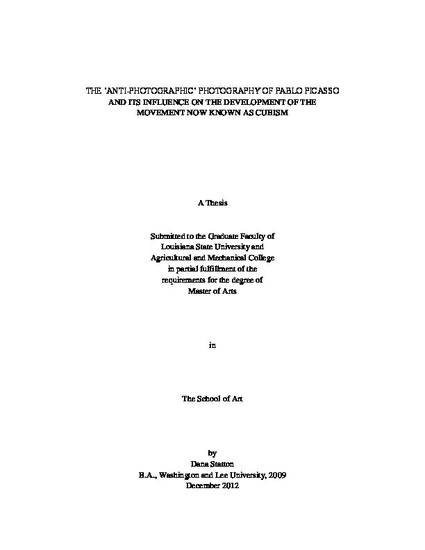
By examining the relationship between photography and painting at the turn of the nineteenth century, it becomes clear that the two mediums have more in common than art historians acknowledge. The two share obvious formal qualities such as form, perspective, depth, and spatial relationships. These formal qualities make it easier to see the potential overlap between the two mediums, as Picasso did during the summer of 1909. Although Picasso is not well known for his photography, the large collection of photographic imagery found in his estate now makes it possible to firmly establish the place of photography within his oeuvre. Indeed, when examining the photographs that Picasso took in the small Spanish village of Horta de Ebro, it is possible to give photography its proper due in the development of the movement now known as Cubism.
Available at: http://works.bepress.com/dana-statton/8/
